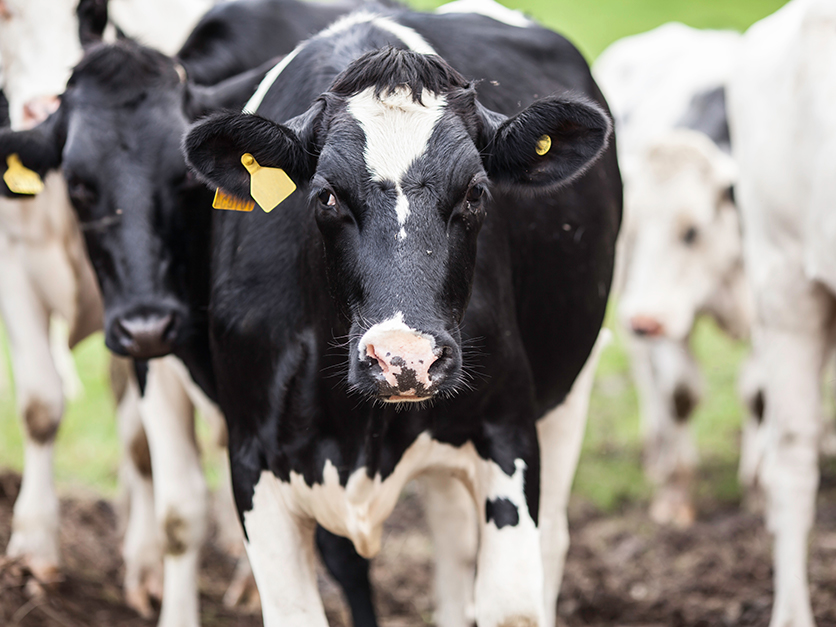Some dairy producers appear to be holding back from signing up for the farm bill’s Dairy Margin Coverage program. DMC is designed to protect producers’ income when prices are depressed or feed costs are high, and margins are expected to stay relatively strong this year.
The enrollment deadline is next Monday and so far, signup is at 80% of the 2023 enrollment, a USDA spokesperson tells Agri-Pulse. The 17,120 operations enrolled in DMC for 2023 received nearly $1.3 billion in payments, or about $75,000 on average.
Monthly margins are currently projected by USDA to stay well above the top coverage level of $9.50 per hundredweight for the rest of 2024.
The Farm Service Agency has revised regulations for the program to allow eligible farms to make a one-time adjustment to their production history.
Keep in mind: DMC is in effect this year because of the one-year extension of the 2018 farm bill.
Milk supply safe, FDA says
The Food and Drug Administration reiterated that both the FDA and USDA believe the milk supply is safe because of pasteurization and the diversion or destruction of milk from sick cows.
In an update Tuesday, FDA said the presence of the H5N1 virus has been detected in raw milk.
“Based on available information, pasteurization is likely to inactivate the virus, [but it] is not expected to remove the presence of viral particles,” FDA said. Therefore, “U.S. government partners have been working with deliberate speed on a wide range of studies looking at milk along all stages of production – on the farm, during processing and on shelves – using well- established methodologies used previously to confirm pasteurization effectiveness for known pathogens.”
Read our story on H5N1 in dairy cows in our weekly newsletter.
Dairy industry calls on administration to negotiate free trade agreements with tariff cuts
The U.S. dairy industry cannot increase domestic production and manufacturing without a trade policy that better supports foreign market liberalization, the International Dairy Foods Association says in comments to the U.S. Trade Representative.
USTR requested comments ahead of a public hearing next month to discuss strategies that improve U.S. supply chain resilience in trade negotiations and enforcement. IDFA is the only food and agriculture association invited to provide testimony.
“IDFA feels that U.S. agriculture is experiencing a historic agricultural trade deficit because USTR is not advancing trade policies that remove tariff and non-tariff barriers while supporting growth in U.S. dairy exports,” says Becky Rasdall, IDFA senior vice president of trade and workforce policy.
It’s easy to be “in the know” about what’s happening in Washington, D.C. Sign up for a FREE month of Agri-Pulse news! Simply click here.
The USTR Office will hold a public hearing on supply chain resilience on May 2.
Plains producers get most in energy payments, ERS finds
About 3.5% of U.S. farm operators were paid for hosting energy development on their land between 2011 and 2020, with those in the Plains states receiving the most money, a new Economic Research Service report concludes.
The highest percentage of producers receiving payments was in the Plains states. Some 7.4% of producers in Kansas, Nebraska, North Dakota, Oklahoma, South Dakota and Texas got average payments of $39,087.
Nationally, the average payment was $30,482, but that varied significantly from year to year. The highest average payment was $62,944 in 2013; the low was $14,032 in 2020.
The chances a farm would get a payment – as well as the size of that payment –increased with the size of the farm. Payment amounts also tracked closely over time with the price of oil. “Location, farm size, and energy market conditions were the key determinants of payment size,” the report said.
 Photo Credit: USDA’s Ganjofarid Anvarzod.
Photo Credit: USDA’s Ganjofarid Anvarzod.New statue celebrates USDA’s Jacobs-Young as a trailblazer
USDA unveiled a statue and new exhibit in honor of Chavonda Jacobs-Young, USDA’s chief scientist and undersecretary for research, education and economics yesterday during a celebration at the Agricultural Research Service in Beltsville, Maryland.
In 2022, Jacobs-Young was selected as an If/Then Ambassador and featured in the #IfThenSheCan – The Exhibit. USDA says the statue represents her “trailblazing leadership in STEM and public service.” She was the first to overcome several barriers, including being the first African American woman to be named USDA chief scientist and REE undersecretary. She also was the first woman and first person of color to hold the position of administrator of USDA’s Agricultural Research Service.
Over the last two years, Jacobs-Young’s 3D-printed statue has been displayed at the Smithsonian Institution in Washington and at locations in Massachusetts and Texas. Her life-sized statue now has a permanent home and exhibit at USDA’s National Agricultural Library.
USDA distributing more than $230M in energy grants
Deputy Agriculture Secretary Xochitl Torres Small on Tuesday said USDA will be funding more than 700 clean energy projects through the Rural Energy for America and Higher Blends Infrastructure Incentive programs.
The agency providing over $194 million through the REAP program, which provides loans and grants for wind, solar, geothermal, small hydropower, and energy efficiency projects. It is also providing $43 million in grants through biofuel infrastructure program, which provides grants to help gas station owners install and upgrade biofuel infrastructure.
Invasive fruit fly threatens Texas citrus
A species of invasive fruit flies is poised to be a threat to South Texas citrus farmers this growing season.
USDA’s Animal and Plant Health Inspection Service says it is working with the Texas Department of Agriculture employees to watch the Rio Grande Valley for a type of fruit fly native to Mexico and Central America. Approximately 1,758 acres of commercial citrus lie in quarantined areas, according to a map published by the agency.
Take note: Commercial citrus accounted for $66 million in revenue in Texas last year, according to Texas State Plant Health Director Stuart Kuehn.




